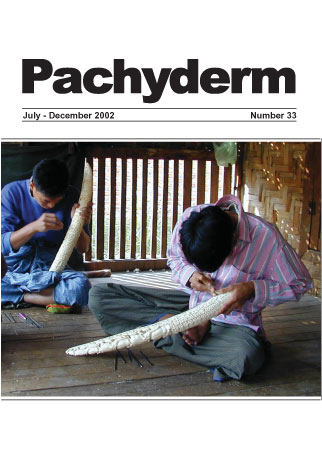Rate of decay of elephant dung in the central sector of Parc National des Virunga, Democratic Republic of Congo
Abstract
"This article focuses on the dung decay analysis undertaken in January-May 1999 as a follow up to the April-July 1998 study of the status and population estimate of elephants in the central part of Virunga NP. (Mubalama 2000) Excessive growth of Acacia sps and bush invasion into savannah areas as a result of the large scale loss of elephants in the 1970s-1980s disallowed easy observation in this area so researchers chose assess the utility dung counts. This study assesses the decay of dung in this area. During both research periods a sample set of fresh elephant dung piles was monitored at 14 day intervals. It is considered that the length and seasonal timing of the study periods provide sufficient information to assess dung counts in this area in both the wet and the dry seasons. The latter time allowed for dung piles to be observed from the time they were fresh until they decomposed and dissappeared. Decomposition is principally brought about by three factors: dung beetles, termites and mechanical disturbances such as heavy rain, fire, trampling and foraging for insects by birds."
Downloads
Published
How to Cite
Issue
Section
License
Copyright (c) 2002 Leonard Kakira Mubalama, Kiyengo, Claude Sikubwabo

This work is licensed under a Creative Commons Attribution-NonCommercial 4.0 International License.




